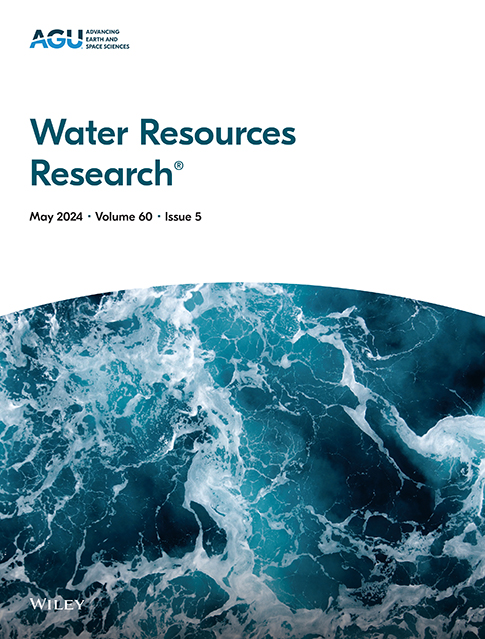Simultaneous Separation of Runoff Pathways and Storage Times via Coupled Electrical Conductivity Mass Balance and Nonlinear Storage-Discharge Relationship: Theory and Application Testing
IF 4.6
1区 地球科学
Q2 ENVIRONMENTAL SCIENCES
引用次数: 0
Abstract
Streamflow can be separated into fast runoff and baseflow according to runoff pathways, and also into new and old water according to storage times. Typically, baseflow does not completely overlap with old water, nor does fast runoff completely overlap with new water. This imperfect overlap relationship divides total streamflow into four components. Separating the fractions of these components is an important prerequisite for understanding hydrological processes. However, the current baseflow separation methods are still inadequate to accomplish this task, and most of them can only separate two components. Therefore, we developed a new hydrograph separation method that couples mass balance and a nonlinear storage-discharge relationship. This method can achieve simultaneous separation of the four components based on an inexpensive tracer electrical conductivity (EC) without the need for precipitation data. The applicability of the new method was tested at 51 gages in the continental United States, which have high-quality streamflow and EC data and are widely hydrologically representative. The results show that the new method is applicable to small-to medium-scale natural watersheds across a wide range of climatic, vegetative, and geologic zones. The added consideration of the impacts of passive storage and water-rock interaction significantly increases the reproducibility of streamflow EC and also leads to more similar baseflow and old water separation, which in fact have significant differences due to distinct components they contain. The new method has a well-defined physical basis and can be expanded for several practical applications.通过耦合电导率、质量平衡和非线性储放关系同时分离径流路径和存储时间:理论和应用测试
水流按径流途径可分为快流和基流,按储存时间可分为新水和旧水。通常情况下,基流不会与旧水完全重叠,快速径流也不会与新水完全重叠。这种不完全重叠关系将总流量分为四个部分。分离这些组分的组分是理解水文过程的重要先决条件。然而,目前的基流分离方法还不足以完成这一任务,大多数只能分离两种组分。因此,我们开发了一种耦合质量平衡和非线性储放电关系的新的水线分离方法。该方法可以在不需要沉淀数据的情况下,基于廉价的示踪剂电导率(EC)实现四种组分的同时分离。新方法的适用性在美国大陆的51个测量站进行了测试,这些测量站拥有高质量的流量和EC数据,并且具有广泛的水文代表性。结果表明,该方法适用于各种气候带、植被带和地质带的中小尺度自然流域。考虑了被动储存和水岩相互作用的影响,显著提高了径流EC的再现性,也导致了更相似的基流和旧水分离,实际上由于它们含有不同的成分而存在显著差异。新方法具有明确的物理基础,可以扩展到几种实际应用中。
本文章由计算机程序翻译,如有差异,请以英文原文为准。
求助全文
约1分钟内获得全文
求助全文
来源期刊

Water Resources Research
环境科学-湖沼学
CiteScore
8.80
自引率
13.00%
发文量
599
审稿时长
3.5 months
期刊介绍:
Water Resources Research (WRR) is an interdisciplinary journal that focuses on hydrology and water resources. It publishes original research in the natural and social sciences of water. It emphasizes the role of water in the Earth system, including physical, chemical, biological, and ecological processes in water resources research and management, including social, policy, and public health implications. It encompasses observational, experimental, theoretical, analytical, numerical, and data-driven approaches that advance the science of water and its management. Submissions are evaluated for their novelty, accuracy, significance, and broader implications of the findings.
 求助内容:
求助内容: 应助结果提醒方式:
应助结果提醒方式:


